Triumph ended the Thruxton’s 20-year production run when it introduced the Thruxton FE (Final Edition) last October. By discontinuing its fashionable café racer, the British marque left a hole in its Modern Classic lineup. Less than one year later, Triumph fills that void with the all-new Speed Twin 1200 RS.
The RS is an up-spec variant of the already capable Speed Twin 1200, but the base model also earns its own batch of upgrades in 2025. It’s safe to say that the new Speed Twin lineup is primed for performance. However, the two models approach that objective with different tools. Before we dive into those differences, it’s worth establishing what the two siblings share.
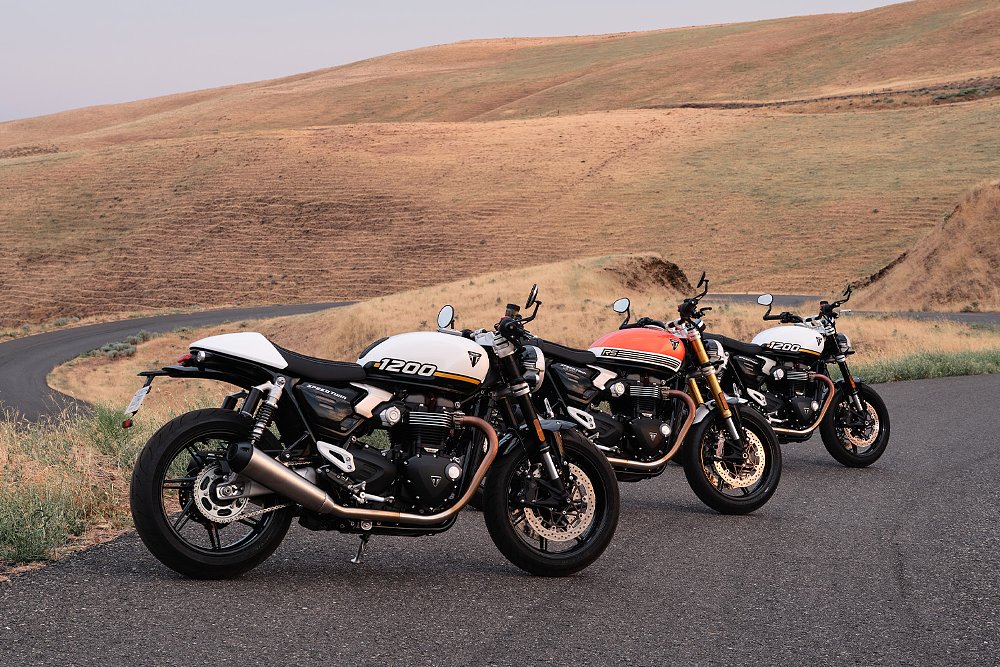
Shared traits
Triumph’s liquid-cooled, 1,200 cc parallel-twin engine still powers the Speed Twin but a new camshaft nudges horsepower up 103.5 (at 7,750 rpm) while maintaining peak torque of 83 foot-pounds (at 4,250 rpm). Along with the camshaft’s performance benefits, it also helps the platform meet strict Euro 5+ emissions standards. Hinckley didn’t restrict the engine updates to the internals, either. The 270-degree p-twin also comes dressed in new engine casings that Triumph describes as “leaner and more angular.”
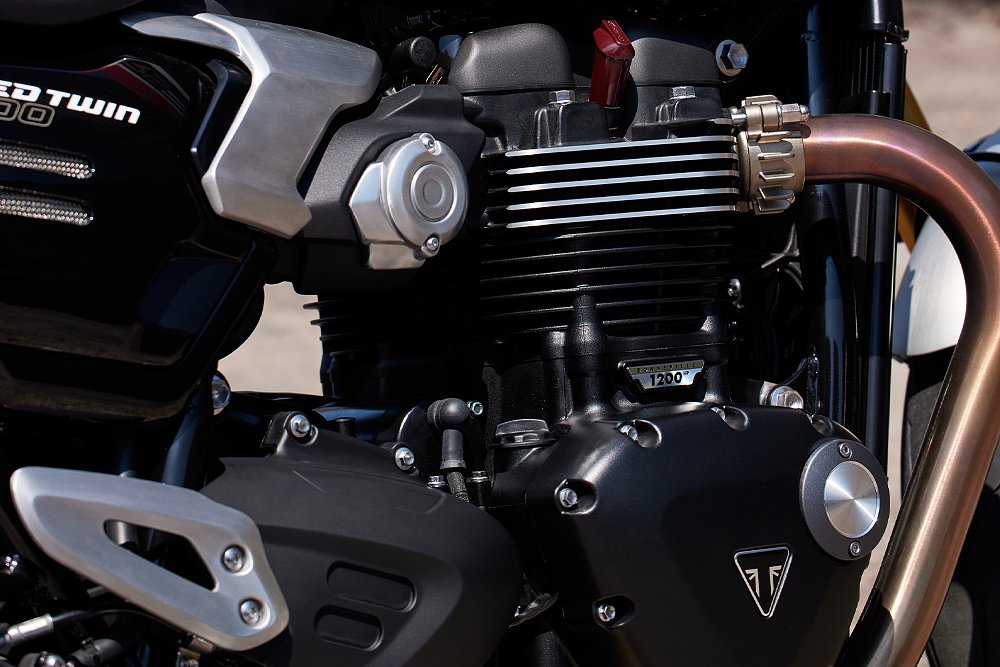
That chiseled look extends to the rest of the bike, as well. The tank is more sculpted and features a new filler cap. The side panels are streamlined to flow with the brush-finished throttle body covers. The headlight doesn’t just cast a new lighting signature but also resides within a redesigned bucket. Even the bench seat is slimmer, with a narrower front for an easier standover position.
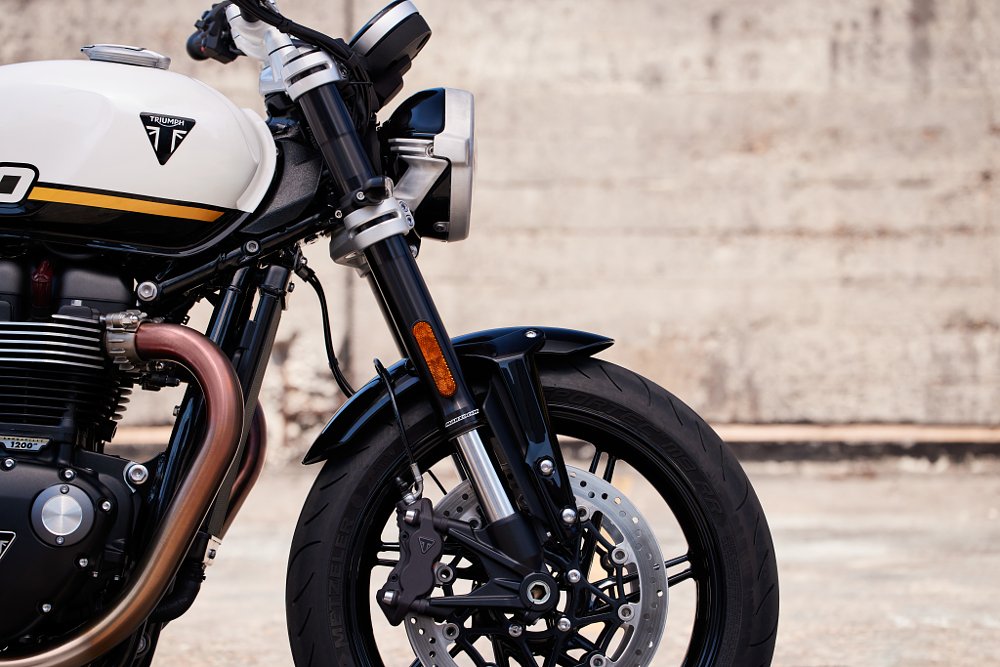
The Speed Twins may co-opt the vintage style but high-tech rider aids modernize the models. Ride-by-wire unlocks two ride modes (Road and Rain) while a six-axis IMU enables cornering ABS and traction control. That’s some spiffy tech for a bike that still favors a steel tube double cradle frame. But that’s where the similarities end.
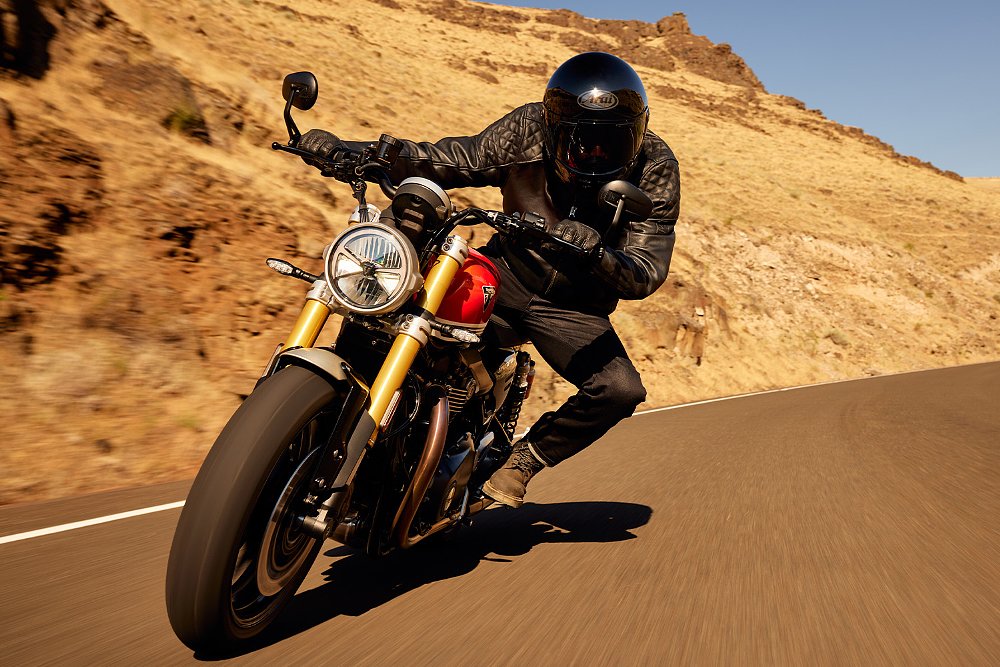
What’s the difference?
The base model isn’t just different from the RS, it’s also different from the past-generation Speed Twin. Its handlebar is now higher and further forward. The Marzocchi rear shocks now feature remote reservoirs and preload adjustability. Even the tires aren’t the same, with Metzeler Sportec M9RRs spooned onto the "turbine" style wheels.
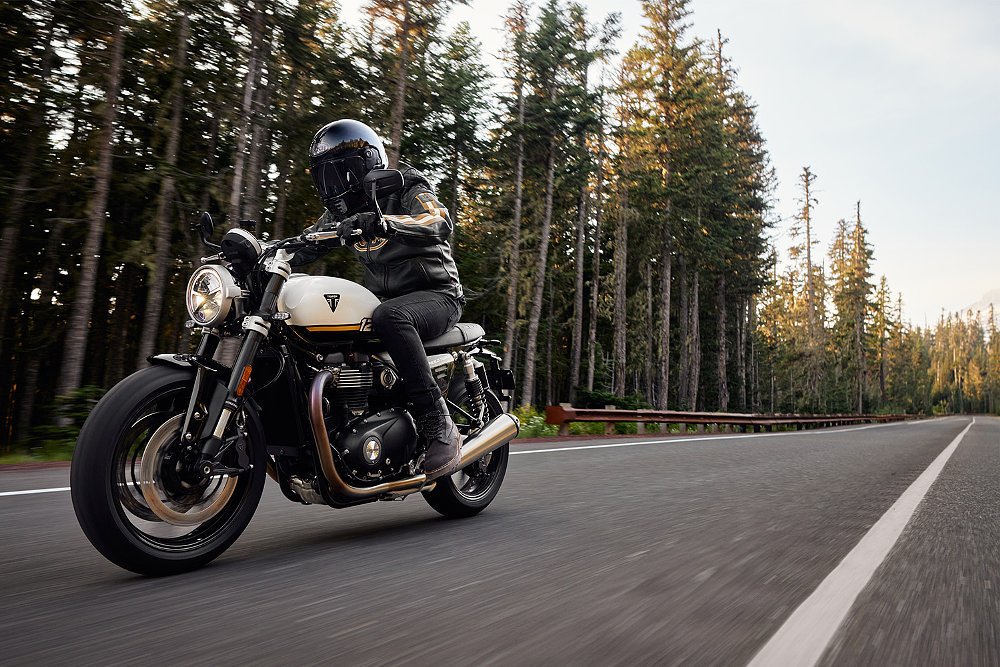
Compared to the standard variant, the Speed Twin RS comes with a lower handlebar and taller, fully adjustable Öhlins rear shocks, which lift the seat height to 31.9 inches (versus 31.7 inches). Together, they result in a more committed riding position. The sporty trim also touts a fully adjustable Marzocchi front end, Brembo Stylema calipers, and Metzeler Racetec RR K3 tires.
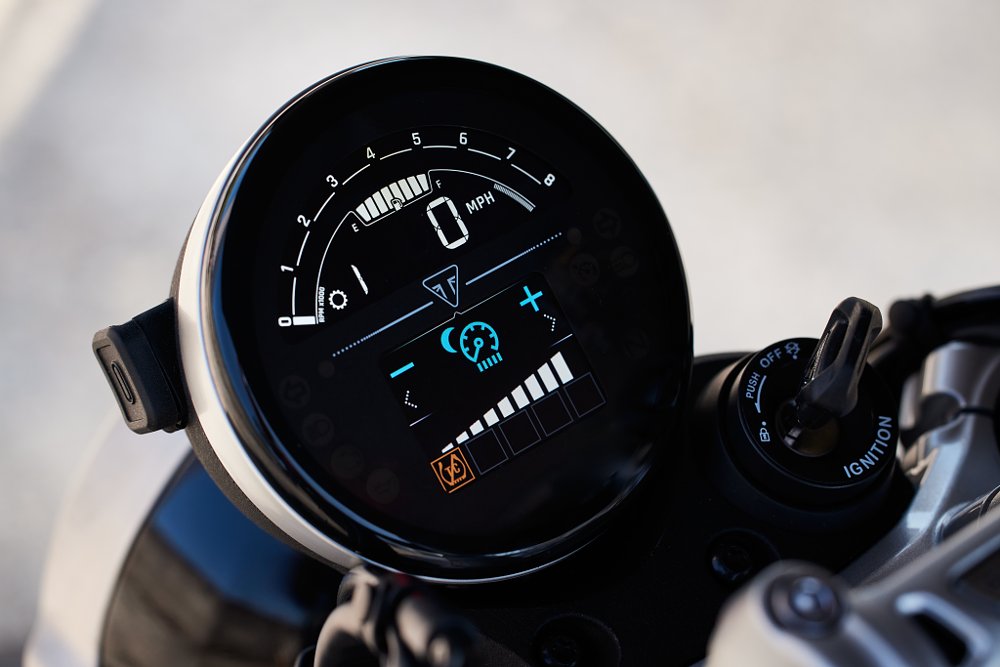
Both Speed Twins may boast the same LCD/TFT combo display but the RS's tech goes two steps further. It not only arrives with a trim-exclusive Sport riding mode but it’s also Triumph’s first Modern Classic model available with a bi-directional quickshifter. All that tech and performance won’t come cheaply, though.

Worthy substitute?
Both the 2025 Speed Twin 1200 and Speed Twin 1200 RS will start shipping to Triumph dealers in December 2024. The former retails for $13,595 while the latter starts at $15,995. To put those price tags into perspective, the MSRP for the outgoing Thruxton RS is $16,995. Here’s the kicker: The Speed Twin 1200 accessory collection allows customers to turn either variant into a café racer.
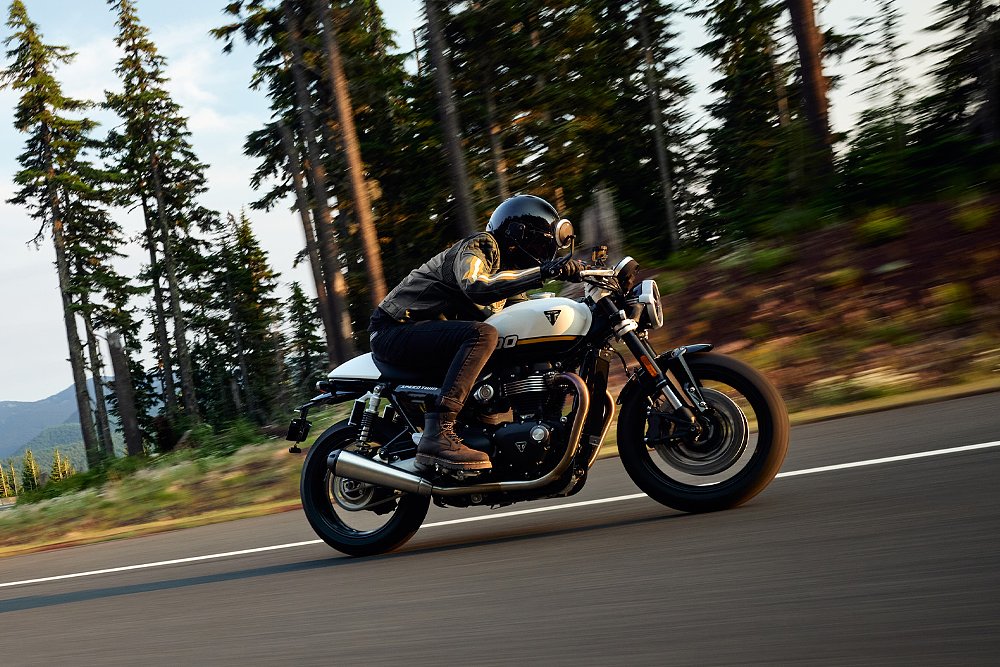
With the parts catalog including clip-ons and a tail cowl, both Speed Twin and Speed Twin RS owners can build their own “Thruxton.” Of course, equipping your Speed Twin as such comes at an additional cost, but it is an appealing option. So much for that void in Triumph’s Modern Classic lineup.
| 2025 Speed Twin 1200 | 2025 Speed Twin 1200 RS | |
|---|---|---|
| Price (MSRP) | $13,595 | $15,995 |
| Engine | 1,200 cc, liquid-cooled, eight-valve, parallel twin | |
|
Transmission, final drive |
Six-speed, chain | |
| Claimed horsepower | 103.5 @ 7,750 rpm | |
| Claimed torque | 83 foot-pounds @ 4,250 rpm | |
| Frame | Steel tube double cradle | |
| Front suspension | Marzocchi 43 mm fork, non-adjustable; 4.72 inches of travel | Marzocchi 43 mm fork, adjustable for spring preload, compression, and rebound damping; 4.72 inches of travel |
| Rear suspension | Marzocchi dual shocks, adjustable for spring preload; 4.57 inches of travel | Öhlins dual shocks, adjustable for spring preload, compression, and rebound damping; 4.87 inches of travel |
| Front brake | Dual four-piston calipers, 320 mm discs with ABS | Dual Brembo Stylema four-piston calipers, 320 mm discs with ABS |
| Rear brake | Nissin two-piston caliper, 220 mm disc with ABS | |
| Rake, trail | 22.4 degrees, 3.6 inches | 22.6 degrees, 3.6 inches |
| Wheelbase | 55.6 inches | 55.7 inches |
| Seat height | 31.7 inches | 31.9 inches |
| Fuel capacity | 3.8 gallons | |
| Tires | Metzeler Sportec M9RR, 120/70R17 front, 160/60R17 rear | Metzeler Racetec RR K3, 120/70R17 front, 160/60R17 rear |
| Claimed weight | 476 pounds | |
| Available | December 2024 | |
| Warranty | 24 months | |
| More info | triumphmotorcycles.com | |











